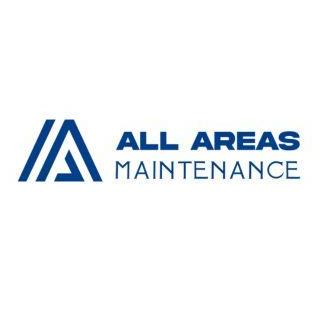Why Regular Brake Fluid Replacement is Critical for Safety
Introduction
Brake fluid is an essential part of a vehicle’s braking system, yet it often goes unnoticed until a problem arises. Its primary function is to transmit the force applied on the brake pedal to the brake calipers, ensuring that the vehicle stops safely. Over time, brake fluid can degrade, absorb moisture, and become contaminated, reducing braking efficiency and increasing the risk of accidents. Regular replacement of brake fluid is not just a recommended maintenance task—it is a critical safety measure.
The Role of Brake Fluid in Braking
Brake fluid serves as a hydraulic medium, transferring the mechanical pressure from the brake pedal to the calipers at each wheel. When in good condition, it ensures that brakes respond promptly and efficiently. However, brake fluid is hygroscopic, meaning it absorbs moisture from the atmosphere over time. Even small amounts of water in the system can lower the fluid’s boiling point, reduce hydraulic pressure, and compromise braking performance.
Why Brake Fluid Degrades
Several factors contribute to the degradation of brake fluid:
Moisture Absorption: Over time, water enters the brake system, lowering the boiling point and increasing the likelihood of vapor lock during heavy braking.
Contaminants: Dust, rust particles, and residues from system components can mix with the fluid, reducing its effectiveness.
Heat Exposure: Repeated braking generates heat that accelerates oxidation and chemical breakdown of the fluid.
Degraded fluid cannot provide consistent hydraulic pressure, which may lead to soft pedals, longer stopping distances, or in extreme cases, brake failure.
Consequences of Neglecting Brake Fluid Replacement
Failing to replace old brake fluid can have serious consequences:
Spongy Brake Pedal: Air or water in the system makes the pedal feel soft or unresponsive.
Brake Fade: Reduced hydraulic pressure under repeated braking can cause brakes to lose effectiveness temporarily.
Corrosion: Moisture in the fluid promotes rust inside calipers, lines, and master cylinders, shortening the lifespan of components.
Increased Repair Costs: Corrosion and system damage caused by old fluid can result in expensive repairs or component replacement.
Safety Hazards: Reduced braking efficiency increases stopping distances and the risk of accidents, especially during emergency maneuvers.
Signs Your Brake Fluid Needs Replacement
Drivers can identify potential issues before they become serious problems:
Discolored Fluid: Brake fluid should be clear or light amber; dark or murky fluid indicates degradation.
Soft or Spongy Pedal: A change in pedal feel may indicate moisture or air contamination.
Brake Warning Light: Activation of the brake system warning light can signal low pressure or fluid problems.
Reduced Braking Performance: Longer stopping distances or inconsistent brake response suggest the fluid may be compromised.
Unusual Smells or Noises: A burning smell or grinding noise during braking may indicate fluid overheating or degradation.
Recommended Brake Fluid Maintenance
Follow Manufacturer Guidelines: Vehicle manuals provide recommended intervals and fluid types. Most suggest replacement every 2–3 years.
Use Correct Fluid Type: DOT 3, DOT 4, or DOT 5.1 fluids are not interchangeable in all systems. Using the correct type maintains system integrity.
Regular Inspections: Check fluid levels and color every 6–12 months.
Professional Flushes: For optimal safety, have the brake system flushed by a professional to remove all old fluid and air bubbles.
Avoid Contamination: Never introduce dirt, moisture, or the wrong type of fluid into the system during maintenance.
Benefits of Regular Replacement
Consistent Brake Performance: Maintains reliable pedal feel and stopping power.
Extended Component Life: Reduces corrosion and wear on calipers, hoses, and the master cylinder.
Enhanced Safety: Prevents brake fade and system failure, particularly under heavy or repeated braking.
Cost Savings: Prevents damage and expensive repairs associated with old, contaminated fluid.
Conclusion
Regular brake fluid replacement is one of the simplest yet most important maintenance tasks for vehicle safety. Old or contaminated fluid compromises braking efficiency, accelerates component wear, and increases the risk of accidents. By adhering to manufacturer guidelines, checking fluid regularly, and performing scheduled flushes, drivers can ensure consistent braking performance, extend the life of critical components, and maintain safety on the road. Proactive brake fluid maintenance is not just preventive—it is an investment in both vehicle reliability and personal safety.
https://www.wikihow.com/P0430-Code
Introduction
Brake fluid is an essential part of a vehicle’s braking system, yet it often goes unnoticed until a problem arises. Its primary function is to transmit the force applied on the brake pedal to the brake calipers, ensuring that the vehicle stops safely. Over time, brake fluid can degrade, absorb moisture, and become contaminated, reducing braking efficiency and increasing the risk of accidents. Regular replacement of brake fluid is not just a recommended maintenance task—it is a critical safety measure.
The Role of Brake Fluid in Braking
Brake fluid serves as a hydraulic medium, transferring the mechanical pressure from the brake pedal to the calipers at each wheel. When in good condition, it ensures that brakes respond promptly and efficiently. However, brake fluid is hygroscopic, meaning it absorbs moisture from the atmosphere over time. Even small amounts of water in the system can lower the fluid’s boiling point, reduce hydraulic pressure, and compromise braking performance.
Why Brake Fluid Degrades
Several factors contribute to the degradation of brake fluid:
Moisture Absorption: Over time, water enters the brake system, lowering the boiling point and increasing the likelihood of vapor lock during heavy braking.
Contaminants: Dust, rust particles, and residues from system components can mix with the fluid, reducing its effectiveness.
Heat Exposure: Repeated braking generates heat that accelerates oxidation and chemical breakdown of the fluid.
Degraded fluid cannot provide consistent hydraulic pressure, which may lead to soft pedals, longer stopping distances, or in extreme cases, brake failure.
Consequences of Neglecting Brake Fluid Replacement
Failing to replace old brake fluid can have serious consequences:
Spongy Brake Pedal: Air or water in the system makes the pedal feel soft or unresponsive.
Brake Fade: Reduced hydraulic pressure under repeated braking can cause brakes to lose effectiveness temporarily.
Corrosion: Moisture in the fluid promotes rust inside calipers, lines, and master cylinders, shortening the lifespan of components.
Increased Repair Costs: Corrosion and system damage caused by old fluid can result in expensive repairs or component replacement.
Safety Hazards: Reduced braking efficiency increases stopping distances and the risk of accidents, especially during emergency maneuvers.
Signs Your Brake Fluid Needs Replacement
Drivers can identify potential issues before they become serious problems:
Discolored Fluid: Brake fluid should be clear or light amber; dark or murky fluid indicates degradation.
Soft or Spongy Pedal: A change in pedal feel may indicate moisture or air contamination.
Brake Warning Light: Activation of the brake system warning light can signal low pressure or fluid problems.
Reduced Braking Performance: Longer stopping distances or inconsistent brake response suggest the fluid may be compromised.
Unusual Smells or Noises: A burning smell or grinding noise during braking may indicate fluid overheating or degradation.
Recommended Brake Fluid Maintenance
Follow Manufacturer Guidelines: Vehicle manuals provide recommended intervals and fluid types. Most suggest replacement every 2–3 years.
Use Correct Fluid Type: DOT 3, DOT 4, or DOT 5.1 fluids are not interchangeable in all systems. Using the correct type maintains system integrity.
Regular Inspections: Check fluid levels and color every 6–12 months.
Professional Flushes: For optimal safety, have the brake system flushed by a professional to remove all old fluid and air bubbles.
Avoid Contamination: Never introduce dirt, moisture, or the wrong type of fluid into the system during maintenance.
Benefits of Regular Replacement
Consistent Brake Performance: Maintains reliable pedal feel and stopping power.
Extended Component Life: Reduces corrosion and wear on calipers, hoses, and the master cylinder.
Enhanced Safety: Prevents brake fade and system failure, particularly under heavy or repeated braking.
Cost Savings: Prevents damage and expensive repairs associated with old, contaminated fluid.
Conclusion
Regular brake fluid replacement is one of the simplest yet most important maintenance tasks for vehicle safety. Old or contaminated fluid compromises braking efficiency, accelerates component wear, and increases the risk of accidents. By adhering to manufacturer guidelines, checking fluid regularly, and performing scheduled flushes, drivers can ensure consistent braking performance, extend the life of critical components, and maintain safety on the road. Proactive brake fluid maintenance is not just preventive—it is an investment in both vehicle reliability and personal safety.
https://www.wikihow.com/P0430-Code
Why Regular Brake Fluid Replacement is Critical for Safety
Introduction
Brake fluid is an essential part of a vehicle’s braking system, yet it often goes unnoticed until a problem arises. Its primary function is to transmit the force applied on the brake pedal to the brake calipers, ensuring that the vehicle stops safely. Over time, brake fluid can degrade, absorb moisture, and become contaminated, reducing braking efficiency and increasing the risk of accidents. Regular replacement of brake fluid is not just a recommended maintenance task—it is a critical safety measure.
The Role of Brake Fluid in Braking
Brake fluid serves as a hydraulic medium, transferring the mechanical pressure from the brake pedal to the calipers at each wheel. When in good condition, it ensures that brakes respond promptly and efficiently. However, brake fluid is hygroscopic, meaning it absorbs moisture from the atmosphere over time. Even small amounts of water in the system can lower the fluid’s boiling point, reduce hydraulic pressure, and compromise braking performance.
Why Brake Fluid Degrades
Several factors contribute to the degradation of brake fluid:
Moisture Absorption: Over time, water enters the brake system, lowering the boiling point and increasing the likelihood of vapor lock during heavy braking.
Contaminants: Dust, rust particles, and residues from system components can mix with the fluid, reducing its effectiveness.
Heat Exposure: Repeated braking generates heat that accelerates oxidation and chemical breakdown of the fluid.
Degraded fluid cannot provide consistent hydraulic pressure, which may lead to soft pedals, longer stopping distances, or in extreme cases, brake failure.
Consequences of Neglecting Brake Fluid Replacement
Failing to replace old brake fluid can have serious consequences:
Spongy Brake Pedal: Air or water in the system makes the pedal feel soft or unresponsive.
Brake Fade: Reduced hydraulic pressure under repeated braking can cause brakes to lose effectiveness temporarily.
Corrosion: Moisture in the fluid promotes rust inside calipers, lines, and master cylinders, shortening the lifespan of components.
Increased Repair Costs: Corrosion and system damage caused by old fluid can result in expensive repairs or component replacement.
Safety Hazards: Reduced braking efficiency increases stopping distances and the risk of accidents, especially during emergency maneuvers.
Signs Your Brake Fluid Needs Replacement
Drivers can identify potential issues before they become serious problems:
Discolored Fluid: Brake fluid should be clear or light amber; dark or murky fluid indicates degradation.
Soft or Spongy Pedal: A change in pedal feel may indicate moisture or air contamination.
Brake Warning Light: Activation of the brake system warning light can signal low pressure or fluid problems.
Reduced Braking Performance: Longer stopping distances or inconsistent brake response suggest the fluid may be compromised.
Unusual Smells or Noises: A burning smell or grinding noise during braking may indicate fluid overheating or degradation.
Recommended Brake Fluid Maintenance
Follow Manufacturer Guidelines: Vehicle manuals provide recommended intervals and fluid types. Most suggest replacement every 2–3 years.
Use Correct Fluid Type: DOT 3, DOT 4, or DOT 5.1 fluids are not interchangeable in all systems. Using the correct type maintains system integrity.
Regular Inspections: Check fluid levels and color every 6–12 months.
Professional Flushes: For optimal safety, have the brake system flushed by a professional to remove all old fluid and air bubbles.
Avoid Contamination: Never introduce dirt, moisture, or the wrong type of fluid into the system during maintenance.
Benefits of Regular Replacement
Consistent Brake Performance: Maintains reliable pedal feel and stopping power.
Extended Component Life: Reduces corrosion and wear on calipers, hoses, and the master cylinder.
Enhanced Safety: Prevents brake fade and system failure, particularly under heavy or repeated braking.
Cost Savings: Prevents damage and expensive repairs associated with old, contaminated fluid.
Conclusion
Regular brake fluid replacement is one of the simplest yet most important maintenance tasks for vehicle safety. Old or contaminated fluid compromises braking efficiency, accelerates component wear, and increases the risk of accidents. By adhering to manufacturer guidelines, checking fluid regularly, and performing scheduled flushes, drivers can ensure consistent braking performance, extend the life of critical components, and maintain safety on the road. Proactive brake fluid maintenance is not just preventive—it is an investment in both vehicle reliability and personal safety.
https://www.wikihow.com/P0430-Code
0 Comments
0 Shares











